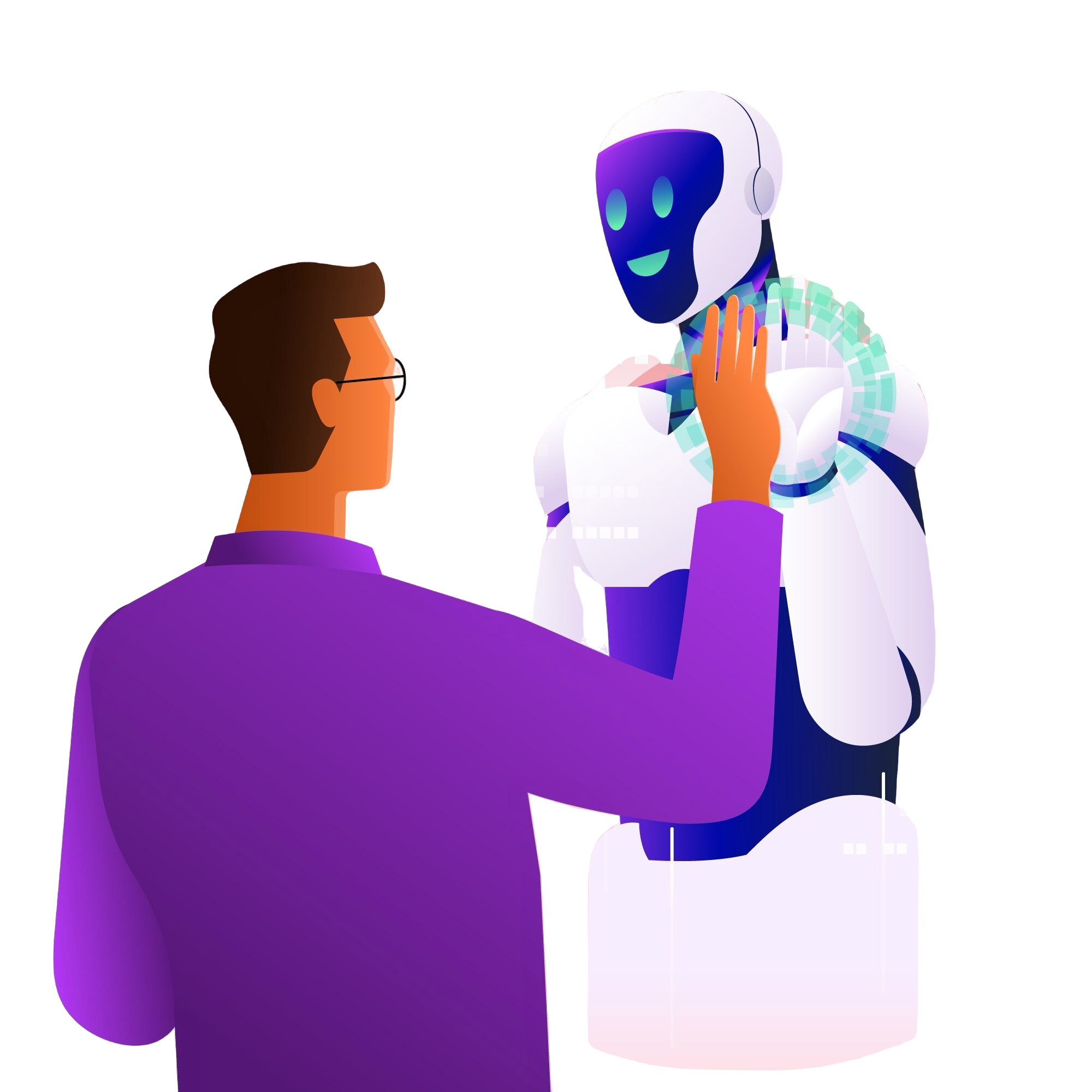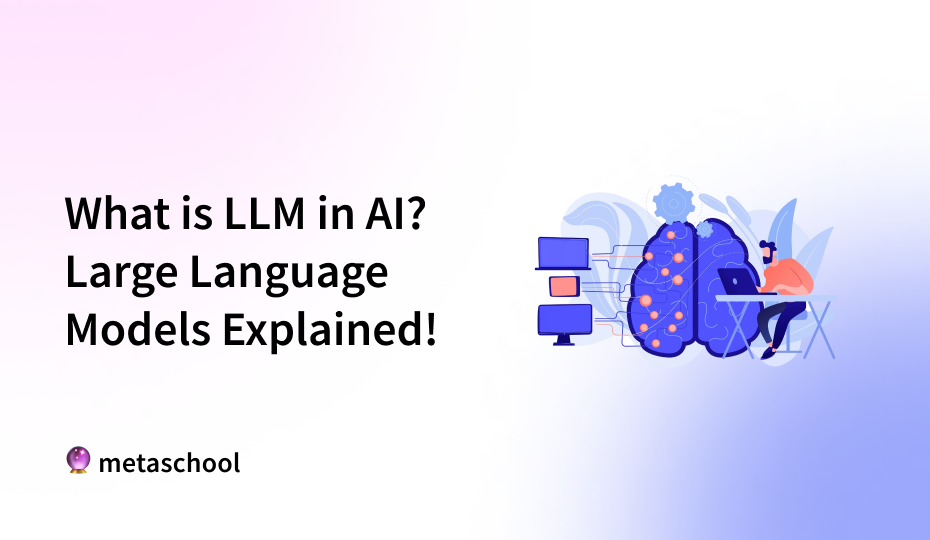Table of Contents
A world where machines can understand and generate human language with remarkable precision, respond to questions, compose essays, translate languages, and even assist with creative tasks like storytelling or coding is becoming a big part of our day to day lives — all thanks to Large Language Models (LLMs). These powerful AI systems have not only changed the landscape of technology but are also reshaping the way businesses, educators, researchers, and developers approach problem-solving, content creation, and communication.

In this article, we will dive into the world of large language models and learn about their capabilities — exploring how they work, why they matter, and what advancements can we expect in the future.
What is a Large Language Model?
A large language model is designed to understand and generate human-like text. Built using transformer architecture — a type of neural network that processes language through self-attention mechanisms — LLMs can handle vast amounts of text data. Unlike traditional models that analyze input sequentially, LLMs process whole sequences in parallel, enabling faster training and the use of high-performance hardware like GPUs.
These models are trained on extensive datasets, often spanning billions of web pages, books, and other textual content. Through this training, LLMs learn the intricacies of language, grammar, and context, allowing them to perform a wide variety of tasks. These include generating text, translating languages, summarizing content, answering questions, and even assisting in creative and technical tasks like coding.
To learn more about LLMs for Code, check out this comprehensive guide on a popular tool called StarCoder. ⭐
LLMs are foundational models, meaning they’re trained broadly to handle multiple tasks, making them adaptable and versatile. With fine-tuning, they can be specialized for specific applications, from customer support chatbots to research assistants. Well-known examples include OpenAI’s GPT-4, Meta’s LLaMA, and Google’s BERT and PaLM models, each of which has advanced capabilities in language understanding and generation.
The use of billions of parameters in LLMs allows these models to capture complex language patterns and respond with coherence and relevance. This capacity has led to widespread applications in areas like content creation, virtual assistance, translation, and knowledge retrieval. As LLMs evolve, they continue to revolutionize our interactions with technology and information, making them a central component of the digital world today.
How does a Large Language Model work?
The process of generating human-like text involves multiple layers of neural networks, each containing millions or even billions of parameters that are fine-tuned during training. The transformer architecture uses a unique mechanism called self-attention which helps LLMs focus on relevant parts of input data, making them highly efficient at handling complex language patterns.
Training with Word Embeddings and Self-Supervision
LLMs use vast corpora like Common Crawl and Wikipedia as training data which is tokenized and transformed into embeddings. These multi-dimensional vectors are used to represent words in a shared vector space, allowing words with similar meanings to be positioned close to one another. Unlike earlier models that struggled to capture word relationships, embeddings enable LLMs to better understand context and semantics. These embeddings, along with weights and biases in the model’s layers, form the parameters that the LLM adjusts during training.
Deep Learning and Probability-Based Prediction
Deep learning is central to how LLMs function. During training, the model processes a vast corpus of high-quality text data, learning to predict the next word in a sentence based on the preceding words. Through self-learning techniques, the model iteratively adjusts its parameters to maximize the likelihood of accurately predicting the next token in a given sequence. This continuous refinement helps the model grasp language rules, including grammar, syntax, and semantic relationships, by identifying patterns and frequencies within word sequences. Over time, this training enables the LLM to generate coherent and contextually appropriate responses to a wide array of inputs.
Self-Attention and Contextual Understanding
The self-attention mechanism in transformers enables LLMs to detect subtle relationships between different parts of a sentence or passage, helping the model keep track of long-range dependencies. For example, an LLM can understand how the beginning of a paragraph relates to its end, which is essential for handling tasks that require contextual comprehension, such as translation, summarization, and question answering.
Fine-Tuning and Reducing Biases
Once an LLM has completed its initial training, it can be refined further through fine-tuning and targeted prompt engineering to optimize its performance on specific tasks. This process of fine-tuning involves adjusting the model’s parameters with additional, task-specific data, which enables it to become highly proficient in areas requiring a deeper understanding and more precise outputs. Unlike general training, where the model learns broadly from vast data, fine-tuning allows for targeted improvement on tasks with high complexity or specificity.
Three main techniques are used to adapt LLMs to various applications:
- Zero-shot learning: The base LLM can handle diverse requests without prior training on a particular task, relying on prompts alone to interpret and generate responses. While flexible, this approach may result in varying accuracy due to the model’s lack of specialized knowledge.
- Few-shot learning: By providing the model with a few relevant examples, it can significantly improve its performance in a specific area, enhancing its ability to recognize patterns and generate more relevant responses. Few-shot learning is particularly useful for areas where the model only needs slight tuning to excel.
- Fine-tuning: As an extension of few-shot learning, fine-tuning involves more intensive training using a curated dataset aligned with the application’s unique requirements. This additional training adjusts the model’s parameters, helping it generate content that is highly relevant, accurate, and specific to a task or industry.
To make LLMs more robust and reliable, especially for professional and enterprise applications, techniques like reinforcement learning with human feedback (RLHF) are employed. RLHF helps to identify and minimize biases, eliminate undesirable responses, and improve the overall quality and contextual relevance of the model’s output. By refining LLMs through fine-tuning and bias reduction, these models become more suitable for high-stakes applications, where accuracy, neutrality, and dependability are paramount.
Applications
Large language models (LLMs) are reshaping a wide array of business processes by offering versatile, high-impact solutions across numerous industries. Their applications extend from enhancing customer service to revolutionizing content creation, code generation, and language translation. Here are some of the major areas where LLMs are making significant contributions:
Conversational AI and Virtual Assistants
LLMs are key drivers behind advanced chatbots and virtual assistants, such as IBM’s watsonx Assistant and Google’s Bard. They improve customer care by providing context-aware, natural language responses that mimic human interactions, enabling more effective and self-serve customer support solutions.
Text Generation
LLMs excel in generating content for a range of applications, from email drafts and blog posts to product descriptions and technical documentation. They’re also capable of more sophisticated generative tasks, like retrieval augmented generation (RAG), which combines information retrieval with text generation to produce accurate and relevant content in response to queries.
To learn more about Retrieval Augmented Generation (RAG), how it works and its various applications, check out this article.
Content Summarization
Using LLMs for summarization helps condense long documents, articles, research papers, and reports into shorter, targeted summaries. This capability is valuable across industries, enabling quick information access and decision-making, particularly in research and media sectors.
Code Generation
LLMs assist developers by generating code snippets, completing functions, and even identifying errors in code. Models like OpenAI’s Codex, which powers GitHub Copilot, and Amazon’s CodeWhisperer can code in multiple languages, “translate” code between languages, and streamline the development process, allowing developers to focus on higher-level tasks.
Sentiment Analysis
With sentiment analysis capabilities, LLMs assess customer sentiment from text, aiding businesses in understanding feedback, managing brand reputation, and improving customer engagement. This feature is particularly useful for gauging customer satisfaction at scale, from social media mentions to customer reviews.
Want to learn how to perform sentiment anaylsis using the NLTK library in Python? Check out this comprehensive guide!
Language Translation
LLMs break down language barriers by offering high-quality translations across numerous languages. They provide organizations with multilingual capabilities, helping expand their reach and support across global markets with fluent and contextually appropriate translations.
Knowledge-Based Question Answering
LLMs can serve as knowledge repositories, retrieving specific answers from vast databases and archives. This application, often referred to as knowledge-intensive NLP, is particularly valuable for industries that require quick access to information, such as legal, healthcare, and academia.
Text Classification and Clustering
LLMs classify and organize text by clustering similar themes or sentiments, which is useful for managing large data sets. Applications range from document categorization to customer feedback analysis and improved search functionality.
Accessibility
LLMs enhance accessibility by powering applications that assist individuals with disabilities, such as text-to-speech and text simplification tools, making information more accessible to all users.
Research and Academia
In research, LLMs support academics and scientists by summarizing literature, identifying patterns in large data sets, and accelerating knowledge discovery, contributing significantly to fields like healthcare, legal research, and more.
With these diverse applications, LLMs are poised to impact virtually every industry, from finance and insurance to healthcare and education, by enhancing customer service, streamlining workflows, and enabling more informed, data-driven decisions. Many of these capabilities can be accessed via API integrations, making them readily available for organizations aiming to leverage LLM-powered solutions.
Future of Large Language Models
The rapid evolution of large language models like ChatGPT, Claude, and Llama highlights the vast potential of these AI systems. Capable of answering questions and generating sophisticated, human-like responses, these models signal an exciting path forward. As LLMs move closer to human-level comprehension and adaptability, their applications are expanding across industries.

Let’s go over some key trends shaping the future of LLMs.
1. Increased Capabilities
Current LLMs are highly capable but far from perfect. Future models are expected to achieve even higher accuracy, with more reliable outputs and reduced biases. Developers are learning from each model release, fine-tuning architectures, and enhancing the quality of responses. This focus on refining accuracy will improve LLMs’ reliability in diverse applications, from technical support to advanced content creation.
2. Fact-Checking with Real-Time Data Integration
An emerging capability for LLMs is real-time data access, enabling them to perform live fact-checks and provide accurate, current information. By connecting with external data sources and delivering citations, LLMs will no longer rely solely on pre-trained datasets, allowing them to respond to evolving information. Current implementations, like Microsoft Copilot, use real-time data to answer questions based on recent events. This approach may minimize the need for manual prompt engineering and bolster trust in LLM outputs.
3. Synthetic Training Data
LLMs are beginning to leverage synthetic data generation to improve model performance. This approach allows models to generate self-curated training data, enhancing their own knowledge base and adapting to new information. For instance, Google researchers found that allowing models to self-generate questions and answers led to performance improvements, boosting model scores across specific benchmarks. This self-improving capability promises to accelerate the development of more adaptable, accurate models.
4. Sparse Expertise
Sparse expertise is a trend that allows specific sections of LLMs to activate for specialized tasks, reducing computational load and improving efficiency. Instead of engaging the entire model for every query, sparse models activate only the most relevant parameters based on the input. OpenAI’s exploration of sparse models could lead to LLMs that are both efficient and specialized, handling diverse tasks without the intensity of dense network processing. This innovation promises scalability with resource-efficient processing, enabling models to scale across complex, domain-specific queries.
5. Integration into Enterprise Workflows
LLMs are becoming embedded in business operations, transforming processes like customer service, human resources, and decision-making. Enterprise-focused LLMs, such as Salesforce’s Einstein Copilot, demonstrate how LLMs can enhance customer interactions, automate responses, and assist with decision-making in real time. By integrating LLMs into daily workflows, businesses can streamline operations, automate routine tasks, and unlock data-driven insights, thereby increasing productivity.
6. Hybrid Multimodal Capabilities
As LLMs expand beyond text-based processing, multimodal models capable of integrating text, images, and audio are emerging. Hybrid LLMs, such as OpenAI’s DALL·E and Google’s Gemini, demonstrate how combining different data types improves understanding and broadens applications. These multimodal models enable features like image captioning and visual question answering, making LLMs versatile for complex, cross-media tasks in industries such as entertainment, education, and medical diagnostics.
7. Domain-Specific Fine-Tuning
The trend toward specialized, fine-tuned LLMs is growing, with models designed for specific fields to enhance relevance and reduce inaccuracies. For example, GitHub Copilot assists with coding, BloombergGPT specializes in finance, and Google’s Med-Palm 2 focuses on healthcare. Domain-specific LLMs benefit from tailored training data, leading to fewer hallucinations and improved precision. Companies investing in custom models are equipping their operations with more effective, relevant tools that can enhance decision-making and user experience in specialized fields.
8. Ethical AI and Bias Mitigation
Ensuring that LLMs adhere to ethical standards is a priority for leading AI developers. Companies like Apple, Microsoft, Meta, and OpenAI are implementing methods to reduce harmful outputs and bias, such as Reinforcement Learning from Human Feedback (RLHF). Organizations like Google’s DeepMind have dedicated teams focusing on responsible AI practices, aiming to address bias and promote fairness. Ethical AI practices help build trust and support wider adoption across sensitive applications where accuracy and fairness are paramount.
Conclusion
Large language models are transforming how we interact with technology and are reshaping industries across the board. From customer service to content creation, code generation, and beyond, LLMs have demonstrated their potential to streamline tasks, provide valuable insights, and bridge communication barriers. As these models continue to evolve, the future holds even greater promise—higher accuracy, real-time data access, multimodal capabilities, and ethical improvements are just the beginning.
With each advancement, LLMs bring us closer to a world where AI can assist us with an unprecedented level of sophistication, making information more accessible and workflows more efficient. By embracing LLM technology responsibly, we can unlock its full potential to benefit businesses, individuals, and society at large, ushering in a new era of intelligent, adaptable AI.
FAQs
What are LLMs for AI?
LLMs, or Large Language Models, are AI models trained on vast datasets of text to understand and generate human-like language. They use deep learning to predict and generate text based on input, enabling applications like text generation, translation, summarization, and conversation.
What is the meaning of LLM in ChatGPT?
In ChatGPT, LLM refers to the Large Language Model that powers the AI’s ability to understand and generate text. It enables ChatGPT to respond to prompts, provide information, and converse in natural language by processing language patterns and contextual data from its training.
What does LLM stand for?
LLM stands for Large Language Model. It represents a class of AI models designed to process and generate language by analyzing vast amounts of text data.
What is the difference between LLM and generative AI?
LLMs are a specific type of generative AI focused on language tasks, using trained models to create text-based outputs. Generative AI, on the other hand, encompasses a broader category that includes not only language models but also models for generating images, music, videos, and more. LLMs are one subset of generative AI designed specifically for language-based applications.
